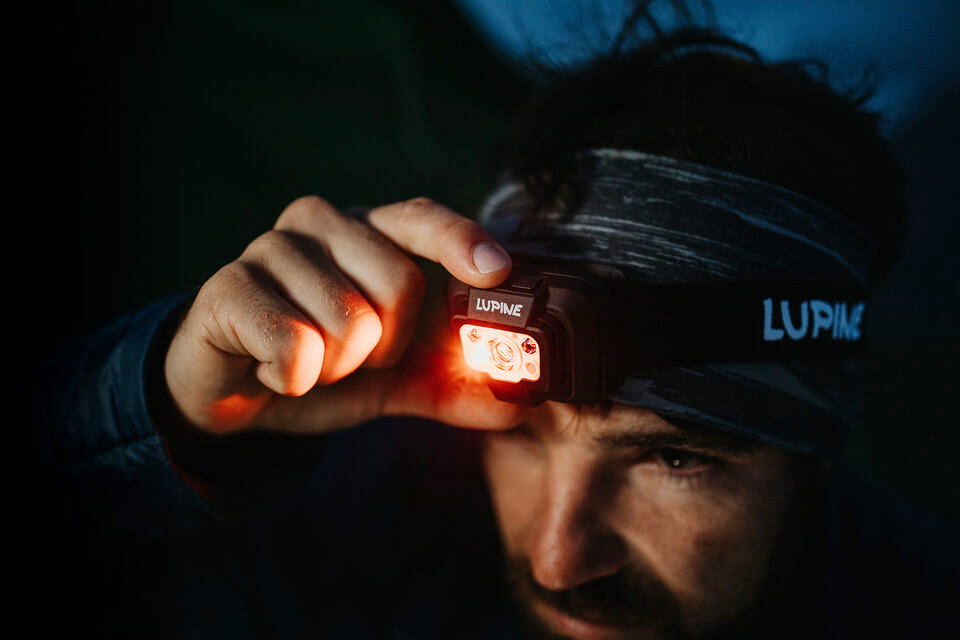Headlamps are versatile lighting tools designed to provide hands-free illumination.
They’re ideal for outdoor activities like bicycling, camping, hiking and hunting and in professional settings such as plumbing, electrical work and search and rescue.
When considering the purchase of a headlamp, it’s important to assess the specific features that align with your intended use. Brightness, beam distance, battery life and comfort are some of the features you’ll want to explore.

The Many Uses for Headlamps
Headlamps are a multipurpose tool that have applications for a wide range of recreational activities and work functions.
Among popular recreational uses for headlamps:
- Trail running and mountain biking: At dusk or dawn, a headlamp not only lights the path but also signals your presence to others.
- Hiking, camping and backpacking: Especially after sunset, a headlamp provides necessary visibility, whether you’re on the trail or at your campsite.
- Climbing and caving: When scaling a vertical face or exploring underground tunnels, a headlamp directs light exactly where you look.
In work environments or industries where safety and precision are paramount, a headlamp offers hands-free operation, which allows you to use your hands to manage tasks or tools effectively. Some of the many industries where headlamps are used on the job include automotive, electrical contracting, construction and mining.
In addition to recreational and work applications, headlamps are a practical all-purpose light for use at home, especially during a power outage. They’re suitable for almost any situation where you’d turn to a flashlight or the flashlight feature on your cell phone – with the added benefit of hands-free use.
Choosing a Headlamp
When selecting a headlamp, evaluate the light’s features that suit your specific needs — from brightness and beam type to battery life and weather resistance. If you’re an outdoor enthusiast, for example, light output and beam distance for navigation through tough terrain are important priorities.
Read reviews to gauge reliability and comfort. Look for features such as adjustability to pivot the light where you need it and compact design for easy storage.
Power and Battery Life
Headlamps may be powered by alkaline batteries, rechargeable batteries or integrated lithium-ion USB chargeable batteries.
Models with rechargeable batteries offer convenience, longer run times and lighter weight. If you need intense lighting for extended periods of time, a rechargeable battery will save the expense of constantly replacing disposable batteries. Look for lamps with an internal battery that is chargeable via USB and consider the time it
takes to fully charge. Also look for lithium-ion integrated USB chargeable batteries that can be replaced, which adds longevity to your headlamp.
Run time (sometimes referred to as “burn time”), which is how long the light will last on a full set of batteries at a set brightness level, is another consideration. (To learn more about run time and how it’s calculated, click here.)
Light Features and Adjustability
Headlamps are available in a wide range of lumens — from 300 to upwards of 1,000 — with a variety of features, such as a spotlight or flood beam and adjustable zoom.
Features to consider:
- Brightness Levels: This is stated as the range of lumens, which is a measure that gauges the total quantity of light emitted in all directions by a light source. Typically, a light with a high lumens count will consume energy at a higher rate than a light with a lower lumens number.
- Beam Distance: This refers to the distance the beam will reach at maximum lumen output.
- Beam Types: Flood (wide) for up-close tasks, spot (focused or narrow) for long-distance viewing.
- Modes: White light, red light and strobe. Red light does not cause pupils to shrink the way white light can, so it’s good for nighttime use.
You’ll also find variations (temperature) of white light. Measured using the Kelvin scale, light temperatures between 3100K and 4500K are referred to as “cool white” or “bright white.” Above 4500K is the “daylight” color temperature of light, a blue-white light that mimics daylight. (To get an idea of how the various light modes illuminate outdoors at night, check out this comparison from Lupine North America.)
Strobe (flash) mode acts as an emergency blinker. Zoom (boost) offers an intense light for a short period of time.
Weather and Environmental Resistance
Durability and resistance to elements are vital for longevity of your headlamp.
Look for IP ratings that indicate water resistance or waterproof capabilities. Consider a headlamp that is both water-resistant for rainy conditions and dustproof for dry climates.
Qualities to look for in a headlamp:
- Resistance: Water, dust and impact resistance
- Durability: Materials and construction that ensure longevity, such as anodized aluminum
- Comfort: Lightweight (7 pounds or less) and comfortable (adjustable straps; second/top
- strap for stability)
- Construction: Plastic is the most widely used; other materials include aluminum, which is lighter than plastic
- Tilt: Straight down or swivel
